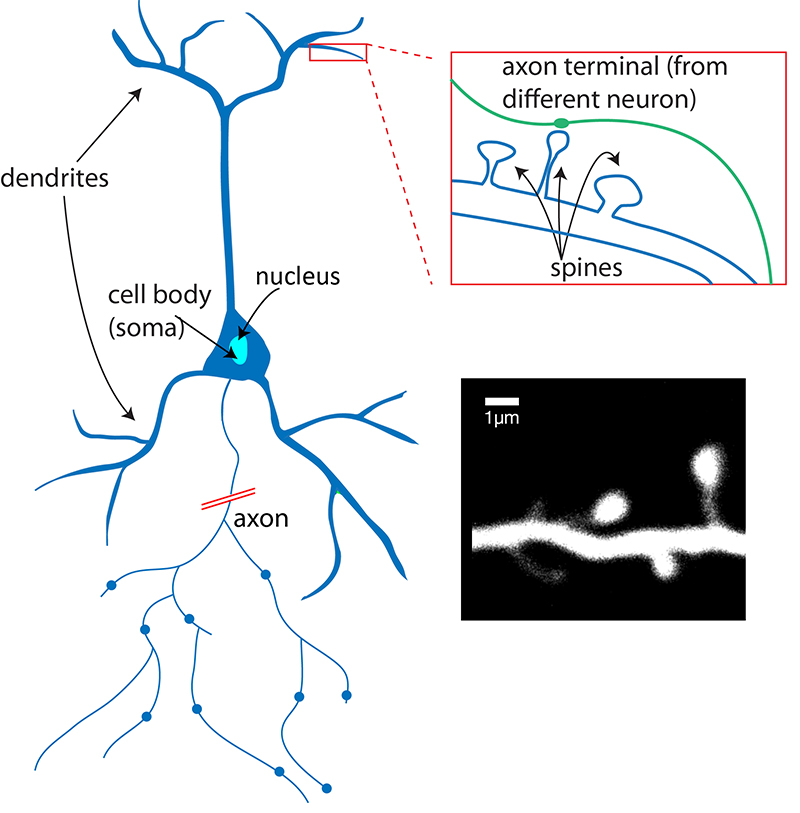Neuron Structure Pogil Answer Key
Neurons (also called neurones or nerve cells) are the central units of the brain and nervous organization, the cells responsible for receiving sensory input from the external world, for sending motor commands to our muscles, and for transforming and relaying the electrical signals at every step in betwixt. More than than that, their interactions define who we are every bit people. Having said that, our roughly 100 billion neurons practice interact closely with other cell types, broadly classified as glia (these may actually outnumber neurons, although it's not really known).
The cosmos of new neurons in the brain is chosen neurogenesis, and this can happen even in adults.
What does a neuron look like?
A useful illustration is to think of a neuron as a tree. A neuron has three main parts:dendrites, anaxon, and a cell torso orsoma (see image below), which can be represented as the branches, roots and trunk of a tree, respectively. A dendrite (tree branch) is where a neuron receives input from other cells. Dendrites branch equally they move towards their tips, just similar tree branches do, and they even accept leaf-like structures on them calledspines.
The axon (tree roots) is the output structure of the neuron; when a neuron wants to talk to another neuron, it sends an electric message chosen anaction potential throughout the entire axon. The soma (tree torso) is where the nucleus lies, where the neuron's DNA is housed, and where proteins are made to be transported throughout the axon and dendrites.

At that place are different types of neurons, both in the brain and the spinal cord. They are generally divided according to where they orginate, where they project to and which neurotransmitters they use.
Concepts and definitions
Axon – The long, thin structure in which action potentials are generated; the transmitting office of the neuron. Subsequently initiation, action potentials travel down axons to cause release of neurotransmitter.
Dendrite – The receiving function of the neuron. Dendrites receive synaptic inputs from axons, with the sum full of dendritic inputs determining whether the neuron will fire an action potential.
Spine – The small protrusions found on dendrites that are, for many synapses, the postsynaptic contact site.
Action potential – Brief electric effect typically generated in the axon that signals the neuron as 'agile'. An action potential travels the length of the axon and causes release of neurotransmitter into the synapse. The action potential and consequent transmitter release permit the neuron to communicate with other neurons.
Author: Dr Alan Woodruff
Neuron Structure Pogil Answer Key,
Source: https://qbi.uq.edu.au/brain/brain-anatomy/what-neuron
Posted by: parkerjudiction.blogspot.com


0 Response to "Neuron Structure Pogil Answer Key"
Post a Comment